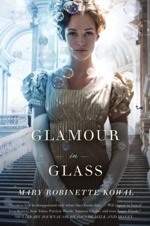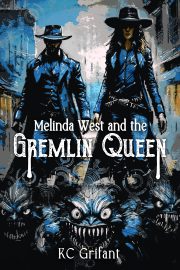Guest Post: Really, Your Outline Does Not Have to Be Perfect
by Mary Robinette Kowal
 I want to take a moment to talk about the principles behind outlines. These aren’t rules, but sort of ideas for how to decide when and if you need to outline.
I want to take a moment to talk about the principles behind outlines. These aren’t rules, but sort of ideas for how to decide when and if you need to outline.
An outline is a roadmap. It helps you decide the overall shape of the novel. It does not lock you into that structure if you stumble upon something interesting. Thinking of it as a roadmap is a useful analogy. When you are on a road trip, you discover things along the way, even if you know exactly where you are going. Sometimes, you even get off the road, either because you see something that interests you more, or because there’s a roadblock. Having an outline can remind you of where you wanted to go with the novel so that when those detours come up, you can evaluate if they are worth it.
Don’t feel locked in. When I wrote Shades of Milk and Honey, I was experimenting with outlines and determined to stick with it as I wrote. At a certain point, I saw a more interesting destination, but kept going anyway. I had an outline, right? When I finally ran into a wall and looked back, I realized that my instincts had been right and that I should have made that plot turn. I ripped out 20,000 words. The novel has a completely different ending than what I had originally planned.
You can make adjustments to the outline as you write. For instance, in Without a Summer, I had a scene described as, “When they arrive at home the Vincent’s and Melody are invited to a skating party.” I realized that I needed to introduce a conflict earlier, so I prefaced it – after writing the skating scene – with “On the way home, Vincent and Jane rescue a coldmonger.” At that point I didn’t know who the coldmonger was only that I needed to add this conflict. Once he was in there, it became clear that he would need to appear later in the story as well and I discovered those places as I went.
You can be as detailed or vague as you need to be. The outline’s primary fuction for you as a writer is to remind you of what you want to do with the story. Sometimes my outlines get very, very detailed and include actual dialogue such as:
When Jane returns to the party, she hears a crude man, MR. BUFFINGTON, say, “Plain Jane? I should count her fortunate if she were merely plain.”
And sometimes, a chapter will look like this:
CHAPTER 10: In which Jane teaches some element of glamour which will be a fundamental plot point later.
Establishment of pickpocket
Establishment of illuminated manuscripts made by nuns
And yes, that’s the entirety of what I have written for that chapter. No, I really don’t know how that’s going to go down or even if it will still be in the outline by the time I get to chapter 10.
Sometimes an outline is a selling tool. This is different from the outline that is for you to use to write with. When you need to convince someone to buy the book, sometimes the smartest thing to do is to leave things out of the outline because you can’t explain them in-depth enough. At this point, I think of the outline as a short story told in present-tense omniscient and try to make it as compelling as possible, without worrying about some of the specifics. This can sometimes lead to, “They discover a plot,” which is perfectly fine in a selling tool. The thing to understand is that a working outline and a selling outline have two different functions even though they look like the same object.
There is no single way to outline or write. Just because sometimes you need an outline doesn’t mean you always will. It’s okay to mix and match your tools depending on your needs for a giving story. After all, if all stories aren’t the same, there’s no reason they need to be written the same way. Vary your tools and techniques.
 Mary Robinette Kowal is the author of Shades of Milk and Honey (Tor, 2010) and Glamour in Glass (Tor, 2012). In 2008 she received the Campbell Award for Best New Writer, and in 2011, her short story “For Want of a Nail” won the Hugo Award for Short Story. Her work has been nominated for the Hugo, Nebula and Locus awards.
Mary Robinette Kowal is the author of Shades of Milk and Honey (Tor, 2010) and Glamour in Glass (Tor, 2012). In 2008 she received the Campbell Award for Best New Writer, and in 2011, her short story “For Want of a Nail” won the Hugo Award for Short Story. Her work has been nominated for the Hugo, Nebula and Locus awards.
Her stories appear in Asimov’s, Clarkesworld, and several Year’s Best anthologies. Mary, a professional puppeteer, also performs as a voice actor, recording fiction for authors such as Elizabeth Bear, Cory Doctorow and John Scalzi. She lives in Chicago with her husband Rob and over a dozen manual typewriters. Visit her journal where this post first appeared.


